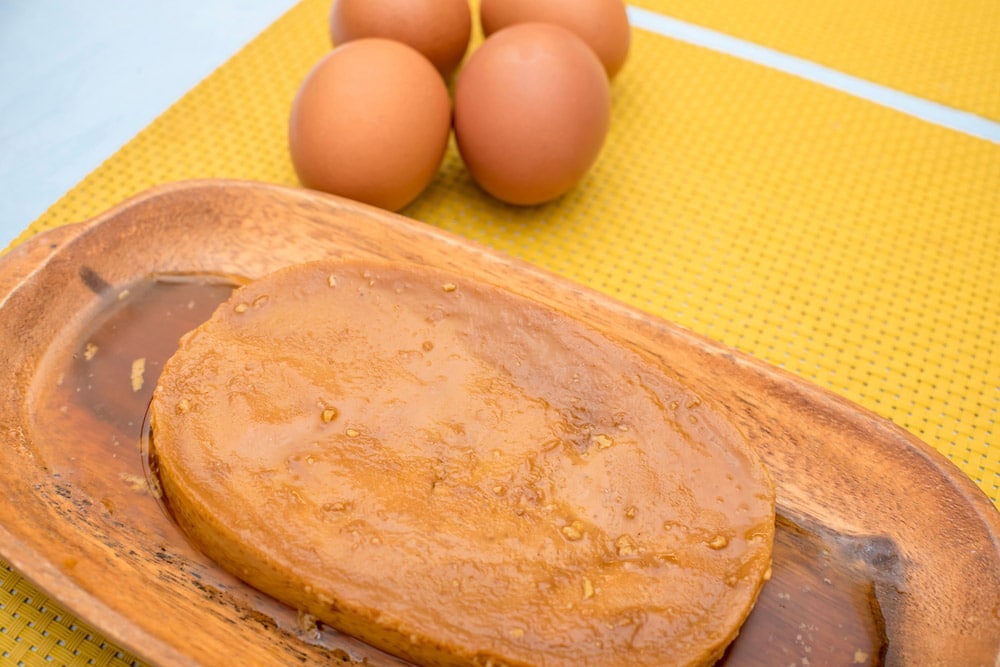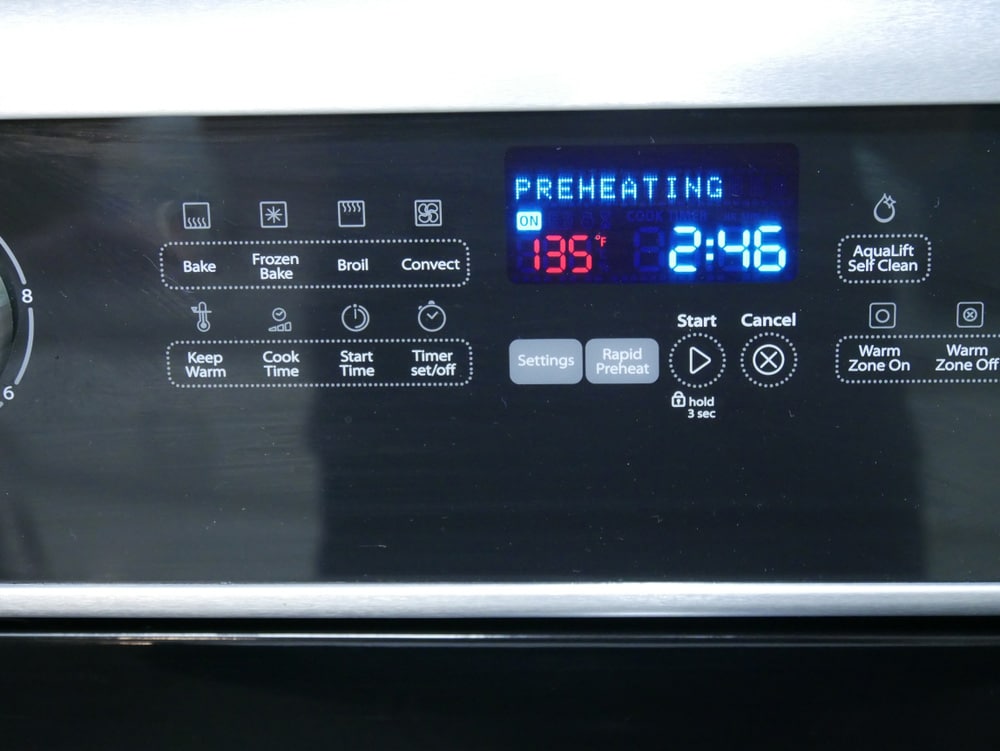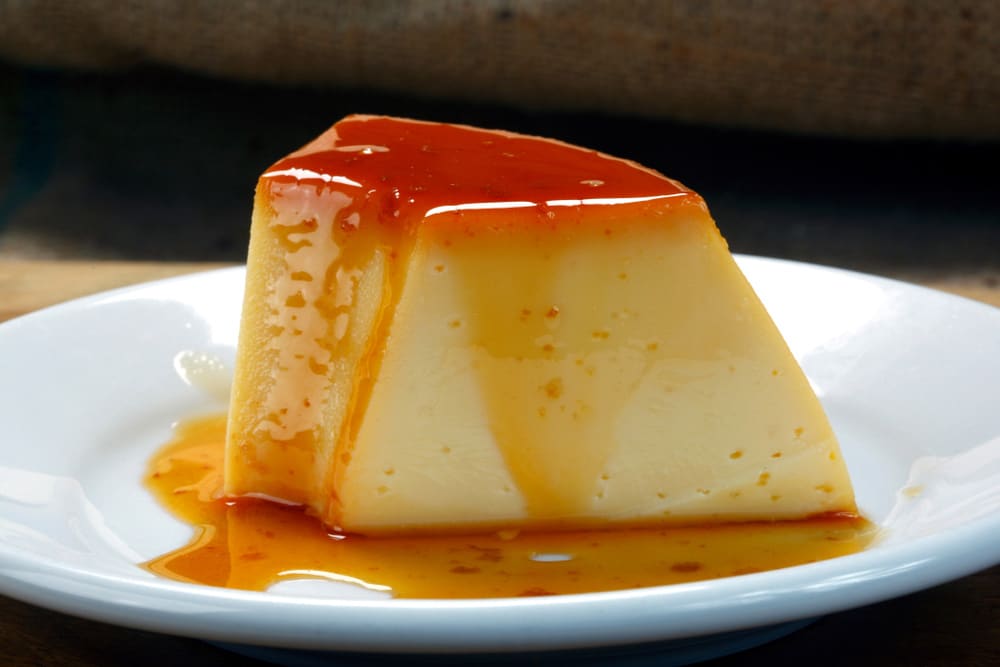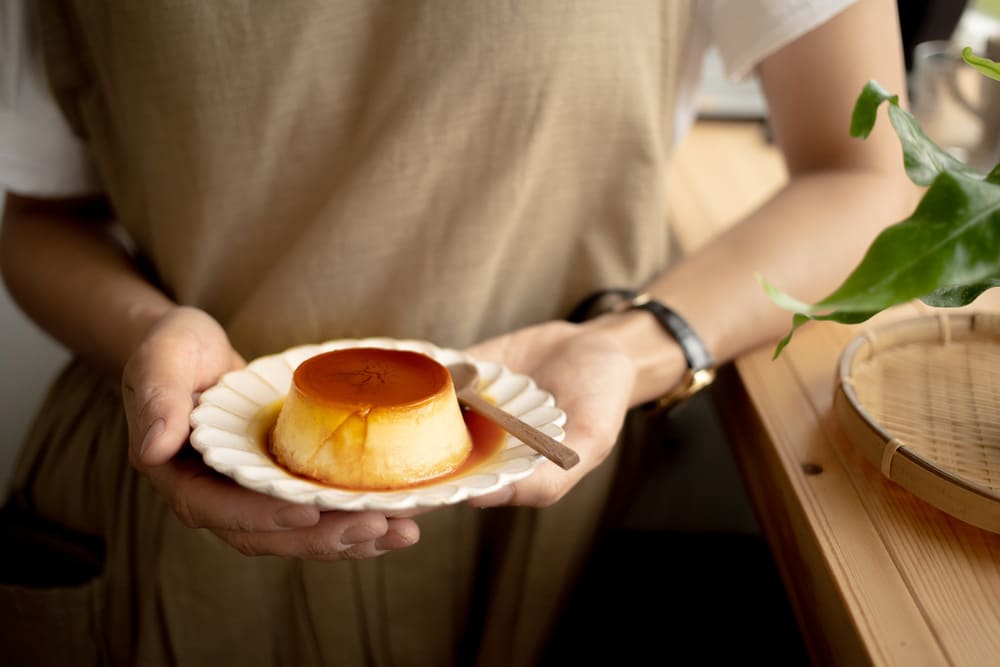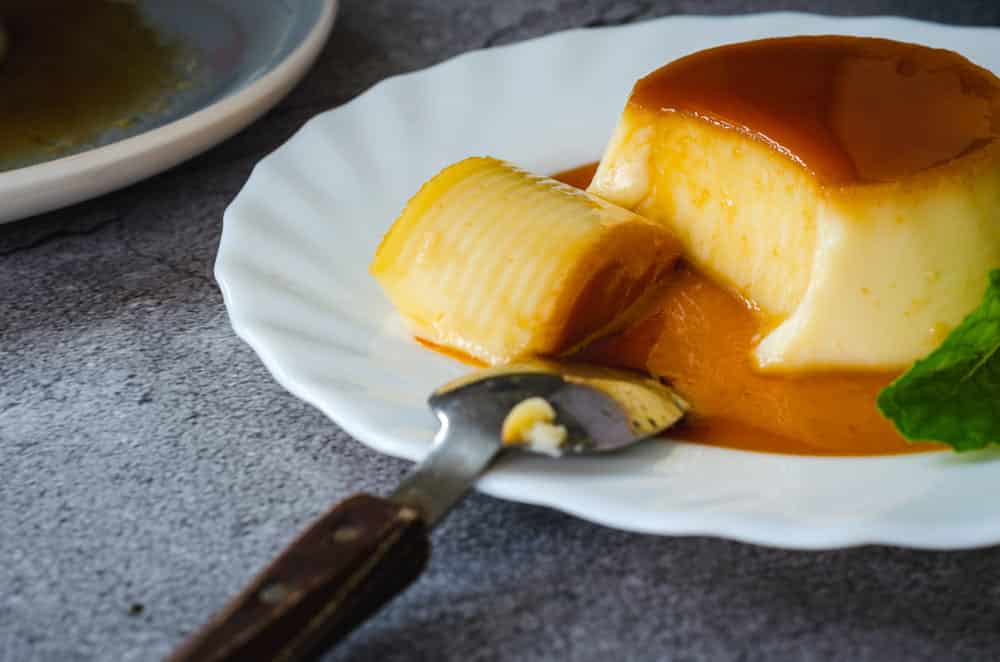
Flan is the answer to your sweet craving. It’s a baked custard, often flavored with the delights of crème caramel or vanilla, and made with cream, sugar, gelatin, and eggs.
When it comes to flans and a crème brûlée, the topping distinguishes the two, with the flan being well-known and loved for its soft caramel top. If those who love baking were to say to you a flan is simple to make and flop-proof, would you believe them?
Maybe you’re disappointed because your flan isn’t behaving the way it should. It hasn’t set properly. It could be that you just did something wrong with your tried and tested flan recipe.
There will always be those steps in your recipe that you have to follow to a ‘T’ if you want your flan to turn out well. People who are used to making flans will tell you that possibly the most troublesome part is getting the custard to an even consistency, and making sure it doesn’t curdle.
If you want your flan to set properly you have to get the custard part right. It’s not everyone that gets their flan right, and some battle to get the right consistency. You don’t want it to be rubbery or too runny either because then it becomes impossible to slice.
Why Is My Flan Not Setting?
Custard can cause problems with your flan not setting the way it ought to. There are always expert cooks who are willing to share their custard tips with you.
- Your flan may not have been chilled properly. When it comes out of the oven, it has to first cool to room temperature before it is chilled for at least 12 hours.
- Maybe you’ve underbaked your flan. Make sure the custard is properly baked before taking it out of the oven.
- Make sure your stovetop temperatures aren’t too high.
Remember that custard can be made with or without starch. Getting custard recipes right can be difficult. Problems with custard begin with the way they are thickened – with or without starch.
That’s the versatility of custard – it can be made with or without starch, cooked on the stovetop, or baked in the oven.
Keep flan preparation temperatures low
All custards are set using low, gentle heat. They are either stirred on the stovetop or baked in a water bath in the oven. Custards without starch will generally thicken between 170°F and 175°F.
Custards with eggs can curdle beyond 185º unless starch is present. When cooking a basic custard on your stovetop, you will need to check the temperature often to make sure it doesn’t rise above 185°F.
An easy flan recipe to try
This creamy custard complete with decadent caramel sauce goes way back to the Roman empire. These days it’s a culinary delight in many countries. The custard is easy to make and has just a few ingredients.
To get it right, use a fairly deep pie dish approximately 10 inches deep. Let’s take a look at what ingredients you’ll need:
- 6 large eggs
- Cup and a half of sugar
- Two 12-ounce cans of evaporated milk
- One 14-ounce can of condensed milk
- Pinch of salt
- A teaspoon of vanilla extract
As you can see, there are quite a few eggs needed to make the flan. In custards, the proportion of sugar and eggs makes a difference in texture and the way a flan sets. Eggs provide body and the added sugar also affects texture and the way the flan sets.
The more sugar in a custard, the less firm it is and the longer it takes to set. The science behind a well-turned-out-flan lies in the fact that, unlike quite a few custard-based dishes, the popular flan has egg yolk and egg white.
- Eggs help a flan to set
The fat in the yolk gives the flan and other desserts like crème Brulee their creamy and smooth texture. If you were to make a flan with only the yolks and not the whites, the flan may have trouble setting. In this particular flan recipe provided here, 6 eggs are used.
Some people want to use fewer eggs. This isn’t a good idea as it is the eggs that are helping the custard to set. Without the full quota of eggs, the flan wouldn’t set properly. Then again, some people try to make a flan with just egg yolks and no whites.
The recipe we’ve got here calls for both yolks and whites. Yolks on their own won’t work because the flan mixture wouldn’t have enough water and protein. The egg whites are essentially made of water and no fat. Egg whites act as a thickening medium. By adding the whites of the egg, you can be sure it will set properly.
- Preheat your oven to avoid baking problems
To make the caramel sauce, get your oven ready to 325°F. An oven that isn’t preheated as it should can affect baked goods. Placing foodstuffs in an oven that hasn’t reached the right temperature can cause problems with texture, rise, and setting.
Have your 10-inch deep pie dish ready. Pour one cup of sugar into a saucepan over medium heat and stir. The sugar becomes a gold color. Once properly melted, pour it into the pie dish standing ready. Using a regular mixer, whisk the eggs until frothy.
Add in the condensed milk followed by the evaporated milk. Whisk in the remaining sugar, salt, and vanilla until it’s nice and smooth.
- Place your flan in a water bath
Place your pie dish in a large roasting pan and fill the pan with boiling water halfway up the pie dish. The key here is baking your flan in the water bath as it regulates the temperature and evenly distributes heat around the dessert.
This gentle form of heating makes sure that the eggs don’t curdle. Pour the custard into the pie dish, place the pan in the oven and bake it till the flan sets. The baking time is 45 minutes.
- The end result
Remove from the oven and allow to cool. You can then refrigerate. When you’re ready to eat it, you will see the flan has set perfectly. Take a sharp knife around the edge of the pie dish to loosen the flan nicely.
Then turn it upside down onto a serving dish. The caramel sauce flows over the custard and your mouth will be watering with anticipation at this stage.
There are signs that indicate all is well with your flan
Holiday times are coming, and a silky smooth flan with its golden caramelized sugar is always an easy holiday dessert treat. One way to know if your flan is ready to enjoy is to look at its color.
When it’s ready, it’s a lovely golden color. It should be firm and just slightly wobbly in the middle. A flan that is too wobbly or almost in a liquid form might have turned out that way because of the wrong oven temperatures. It may also be because your baking time wasn’t long enough.
Yes, it will set a little bit during chilling, but it won’t be firm enough. If your custard is too runny, it needn’t be the end of the flan. You may have followed the recipe to the letter and it may still have turned out too runny and will never set.
Starch can thicken your flan. Be careful how you add the starch powder. You can’t just add it into the pot for thickening as it will turn into a lumpy mass.
Make a slurry of one tablespoon of starch or 2 tablespoons of flour – whatever you have – and mix it with 4 tablespoons of milk. Then add it to your pot. This amount works with a cup of cooked custard so adjust the amounts according to your recipe.
Keep your custard on the heat when you add the slurry till the custard is at the right consistency. Of course, the main way to thicken your custard without adding additional thickeners is to check how you actually do the mixing. That’s why making a flan can be tricky.
You can’t mix it too vigorously because the consistency is too watery and it won’t set. Mix too little and the ingredients don’t combine properly.
Conclusion
Wonderfully sweet, smooth custards are always the ideal ending to a tasty meal. The beauty of a flan is that it’s not too heavy. The dessert won’t leave you feeling like a bloated, sluggish snake that doesn’t need to feed for a month.
Flan is such a popular custard dessert – loved for its creamy texture. Made with sugar, milk, eggs, and vanilla. The cherry on the top is the caramel sauce which decadently trickles down the sides of the custard.
This creamy custard needs to set properly and be firm enough not to collapse. These guidelines can be followed to ensure that your flan sets properly and remains one of your favorite recipes.

